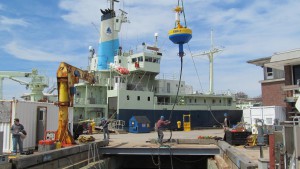NOAA, the Woods Hole Oceanographic Institution (WHOI), and North Carolina State University just issueda moderate forecast for this year’s red tide inthe Gulf of Maine, similar to the past three years. The 2015 forecast is the eighth seasonal Gulf of Maine red tide forecast the WHOI-led team has issued and is part of a larger effort to expand a national NOAA harmful algal bloom forecasting system to New England. Red tide, caused by the alga Alexandrium fundyense, produces a toxin that can lead to paralytic shellfish poisoning, which can result in serious or even fatal illness in humans who eat contaminated shellfish. Seasonal red tide forecasts depend on a map of the alga’s cysts in Gulf of Maine sediments from samples taken last fall and on computer models that simulate a range of bloom scenarios based on previous years’ ocean conditions.

In addition to the seasonal forecast, NOAA funds Woods Hole and North Carolina State University to issue weekly updates throughout the bloom season. Updates report bloom extent, trajectory, and intensity. WHOIwill also maintain three robotic HAB sensors called environmental sample processors (ESPs) at locations along the Maine coast throughout the spring and summer.
“This partnership on the Gulf of Maine seasonal HAB forecast and use of ESPs to detect toxic red tide offshore are examples of NOAA’s role in improving ecological forecasting capabilities along our coasts,’ said Holly Bamford, Ph.D., assistant NOAA administrator for NOAA’s National Ocean Service performing the duties of the assistant secretary of commerce for conservation and management. ‘Advance warning of toxic HAB events enables proactive actions to protect coastal economies, making the region more resilient to red tide outbreaks.’
Contact person: Quay.Dortch@noaa.gov, 301-713-3338 x157.
